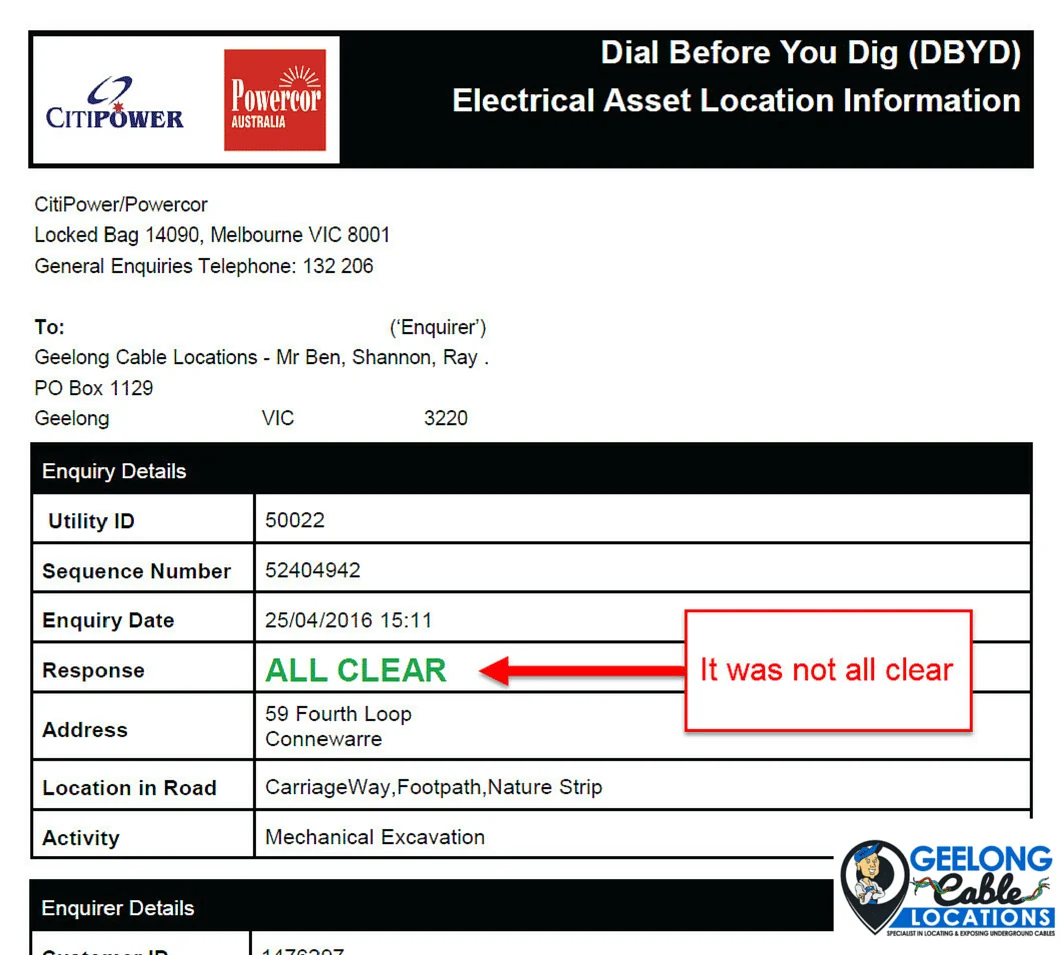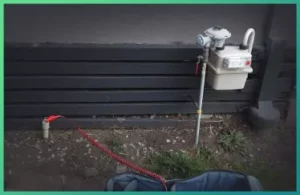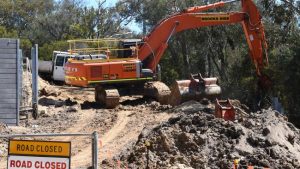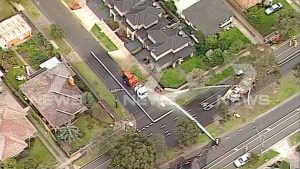For those of you in the construction industry, especially those who have been in it for some time, I think you would have to agree with me that the Dial Before You Dig service we have available to us today is a brilliant system.
You can make one phone call to DBYD and tell them where you are digging and, within minutes, your inbox will suddenly start getting filled with emails from the underground utility owners that have buried cables or pipes in the area you are digging in. (Don’t believe it can be this fast? Then watch this video.) It’s a marvelous process and something that we only dreamed would be possible just 20 years ago.
So then, what is the issue?
The issue with such a brilliant and seamless system is that I’m witnessing a level of complacency and outright trust put into it, which, to be honest, of late is starting to scare me.
Now maybe this is because we’re at the forefront of it—we’re in the field every day, doing cable locating at a variety of places around Victoria—and we see hundreds of individual underground service plans that have been sent to the customer through the DBYD system each week.
But lately, I find I’ve been to too many jobs where the customer onsite has told me the Dial Before You Dig plans have said the area is all clear, but they wanted to get me out just to double check. And of course, I then look around and find underground utilities that should have been on the Dial Before You Dig plans, yet are not. And this is not just me—my other guys who go out in the field are finding the same thing as well.
Now, this is nothing new: the plans are still the same as we were getting 5, 10, even 15 years ago. Of course, back then we were getting them in the mail or by fax, but what is worrying me at the moment is the mindset that is out there surrounding the Dial Before You Dig system and the faith that is put into it.
They are not actually Dial Before You Dig plan
Just to be clear, when I say “Dial Before You Dig plans” I’m actually talking about the plans you get back from the utility companies. DBYD is merely the go-between or conduit between you and the utility companies.
If you’re reading this post, then I’m pretty sure you are fully aware that it isn’t actually Dial Before You Dig that sends you the plans. I won’t go through it here but if you were unaware of that, then I suggest you read this post I did about the myths around Dial Before You Dig.
Case Study
So, let me give you a real life example of what I mean by the information that is being sent back being wrong.
A couple of weeks ago I was out doing a job for a contractor who was putting in the new NBN cable. He called me out to check over the areas they were about to start working in as they didn’t want to damage any of the underground services in the area once they started to do their excavating.
They did their own Dial Before You Dig request and brought the plans out to site with them, but I still asked my guys in the office to do our own request as well—just in case they forgot to bring one of the utility plans with them or in case they didn’t print them outright, or a range of other things that do go wrong when you ask a client to do his own DBYD request and bring the plans out to the site.
So I get on to the site. Now, I wouldn’t say it is a new subdivision, as it would have been built in the early 2000s, but it is a modern one, where all the utilities are buried underground.
We start going through the job, the client shows me the area of works and then we look over the Dial Before You Dig plans together. The paperwork from Powercor (who looks after all the electricity network in this part of Victoria) has on the front page, in big bold text, all in capitals and colored green so that it really stands out: “ALL CLEAR” (see scanned image below).

Of course, I read this then turn around and see a heap of stuff that needs power. So I instantly think, ‘OK—the client has stuffed up and not told Dial Before You Dig exactly where they are digging.’
So I go to my own Dial Before You Dig requested plans to have a look at what Powercor sent back, and—would you believe it—we also got the same ‘all clear’.
Now at the time of doing the job, I wasn’t thinking of doing this post and sharing it with you all, so I didn’t think of taking a photo of the area that I could use, but what I have done is go to Google Street View and brought up the exact location of where they were digging. The image in Street View was taken back in January 2008, but the only difference in the area between then and now is that there are more houses on the street now.
I have done a screenshot and added it below so that you can see what I saw (just imagine a couple more houses in the street).
In the image, there is a house, street light, and Telstra cabinet that all have to have power going to them.

Now, yes, it’s OK because they called me in, so I was able to go through and locate where the underground power cables were, enabling these guys to dig safely on the day and not worry about damaging anything. But can you imagine what would have happened if they did hit a power cable?
Yes, Powercor protects their butt, because, on the fourth page of disclaimers they send you, it says there could be more services in the area than what is shown. But come on, you can’t have in big writing on the front page, “ALL CLEAR” and then say 4 pages in that there may be more stuff there.
While we are at it…
Mind you, while I’m having a go at Powercor, let me tell you another issue they have with their Dial Before You Dig system. On that fourth page, where it tells you there may be more stuff there, it also asks you to call them if you do find services in the area that they don’t know about. Well, I did call them and said their plans are wrong and someone stuffed up as there is actually power out here, but it’s OK as I’m on site now, so if someone can just manually look up the area and send me the plans for the power that is here, that would be appreciated just so I can make sure I’ve found it all. Well, the answer I got back was something like, “No, we did not stuff up, and if it says all clear then it is all clear.” Well, as you could guess, that nearly knocked me over. I’m like, “There are houses and street lighting here, so I am telling you I know what I am talking about: there is underground power here.” But let’s move on otherwise this post could go for some time if I start bringing up all the things the utility companies could be doing better.
Plans are not to be relied upon
The main point I want to raise here is that if you are doing any excavating then you definitely need to do a Dial Before You Dig request. But once you get the plans back, you just need to be aware that they are only a guide and you can not rely solely on them. You still need to do your own homework and spend the time looking over the site to make sure the information you got back is correct.
If you don’t know how to make sure the plans you get back are right, or you don’t want to take on the added responsibility of doing it, then call in someone like us who are Dial Before You Dig certified and can come out to your site and tell you where all the underground utilities are onsite.
In summary, it’s vital that you never rely solely on the information you get from the asset owners when you do a Dial Before You Dig request. If you do and they are wrong, the mistake could be deadly.
Regards
Ben






